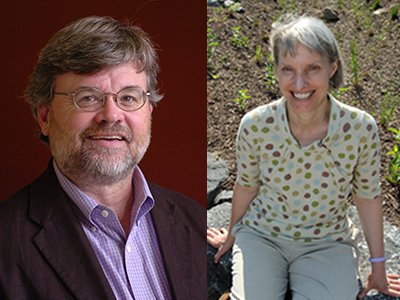Syracuse, SUNY-ESF Faculty Win Grant to Advance Appreciation for Onondaga Lake
Project will help inspire students to become responsible environmental stewards

Faculty from Syracuse University and SUNY-ESF have won a $91,000 grant from the U.S. Environmental Protection Agency to help teachers and students better understand and appreciate the unique cultural and ecological significance of Onondaga Lake.
Drawing on both scientific and Native American knowledge and traditions, the project is designed to simultaneously advance students’ scientific understanding of the local ecosystem and inspire them to become responsible environmental stewards themselves. In conjunction with the Onondaga Nation and Skä•noñh—Great Law of Peace Center in Liverpool, project leaders are developing curricula and resource materials for teachers to use with students in middle school, high school and college classrooms.
Rachel May, coordinator of sustainability initiatives for Syracuse University and author of the grant proposal, says the curriculum will draw on the traditional Haudenosaunee Thanksgiving Address to tie in the cultural and scientific aspects of the material. “The idea is to use that address as a framework for environmental education,” says May. “Each section acknowledges the importance of some aspect of the material world—for example, the sun, moon, stars, water, plants and thunder. The address embodies a wealth of what is known as traditional ecological knowledge, and we are taking it and using it as a complement to scientific ecological knowledge. And our hope is that it inspires gratitude and a sense of reciprocity with nature, which really is the primary thing humans have to offer the non-human world.”

Co-manager with May and the principal investigator for the project is Philip Arnold, professor of religion in the College of Arts and Sciences and director of Skä•noñh, a Haudenosaunee cultural education center located along the shores of Onondaga Lake. Collaborators include Robin Kimmerer, professor of biology and director of the Center for Native Peoples and the Environment at SUNY-ESF; Elizabeth Folta, assistant professor of informal biology education at SUNY-ESF; as well as local residents Freida Jacques, clan mother at the Onondaga Nation; and Sandy Bigtree, a Mohawk woman, lifelong Syracuse resident and Onondaga Nation advocate.
As part of the first phase of the project, project staff will lead an all-day workshop Aug. 2 at the Skä•noñh center for a select group of teachers. The workshop will familiarize them with Onondaga Lake and Haudenosaunee history and culture, including the Thanksgiving Address; and then give them a chance to explore the curriculum for themselves and offer feedback on it. May says more than 80 teachers have already expressed interest in the workshop; of that number, the organizers plan to select 32 to participate from various grade levels, school districts and area colleges within the Onondaga Lake watershed.
In the project’s second phase, six school districts will receive mini-grants to teach the curriculum—including field trips to Onondaga Lake and Skä•noñh—this fall. Using feedback from the test run, project leaders will refine the curriculum and then make it available to others via an open-access website.
The workshop will serve as a professional development opportunity for teachers, and curriculum content is being designed to align with state standards, Arnold says.
“The goal is to develop a set of materials in collaboration with the Haudenosaunee and academics that can be widely distributed and utilized to help kids learn, through hands-on activities, about indigenous knowledge and how it can be applied to our lives,” he says. “This is something Skä•noñh is already doing. My hope is that this project will give teachers really good material they can use in the classroom and raise the visibility of the center and its value to the community.”
The center, located at the former Ste. Marie among the Iroquois site on Onondaga Lake Parkway, opened last fall. Managed by the Onondaga Historical Association, it works closely with the Onondaga Nation, Syracuse University and other academic partners.
May says she and Arnold also hope the coursework will motivate students to connect more closely with the local ecosystem beyond their school or campus boundaries—and, inspired by the example of the Haudenosaunee, develop a greater sense of awe, gratitude and responsibility for the natural world.
“Scientific evidence shows that gratitude is a strong motivator for becoming good stewards of the environment,” May says. “We hope gratitude is something people take away from this—that they learn to acknowledge something outside of themselves.”
